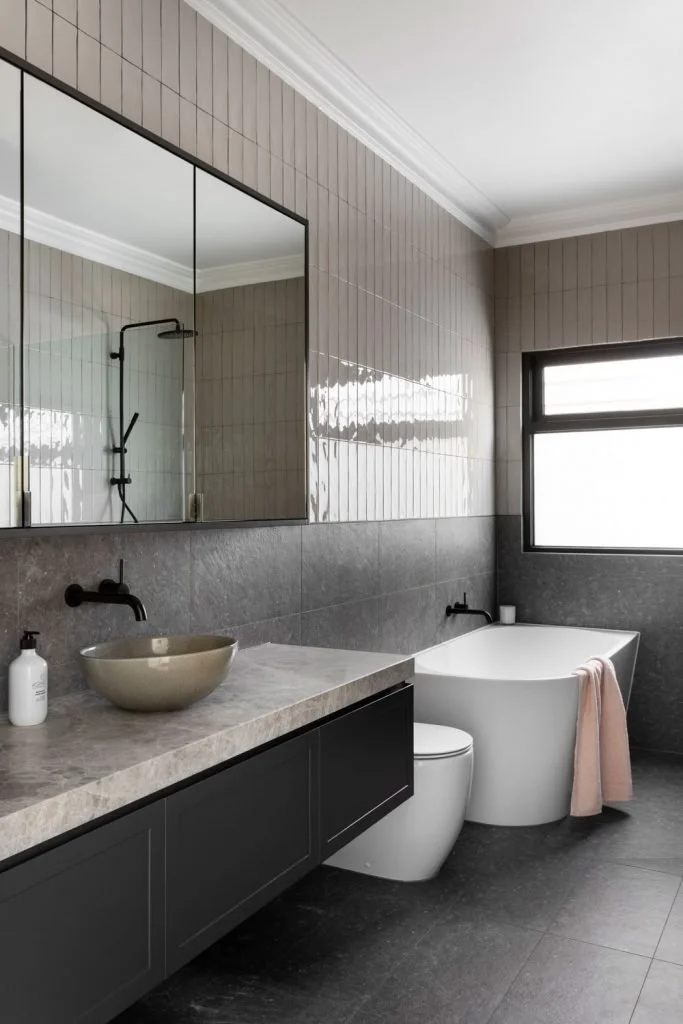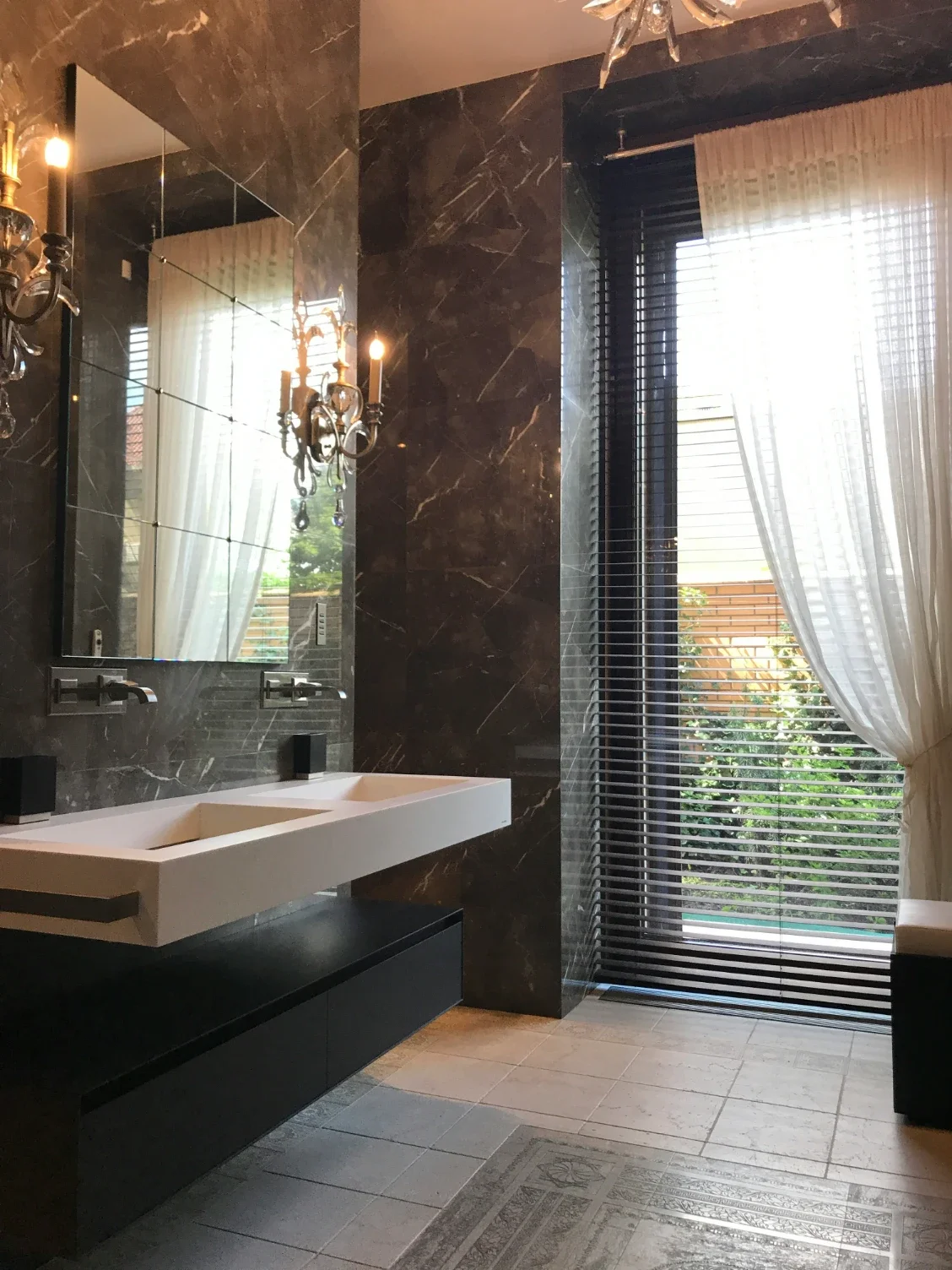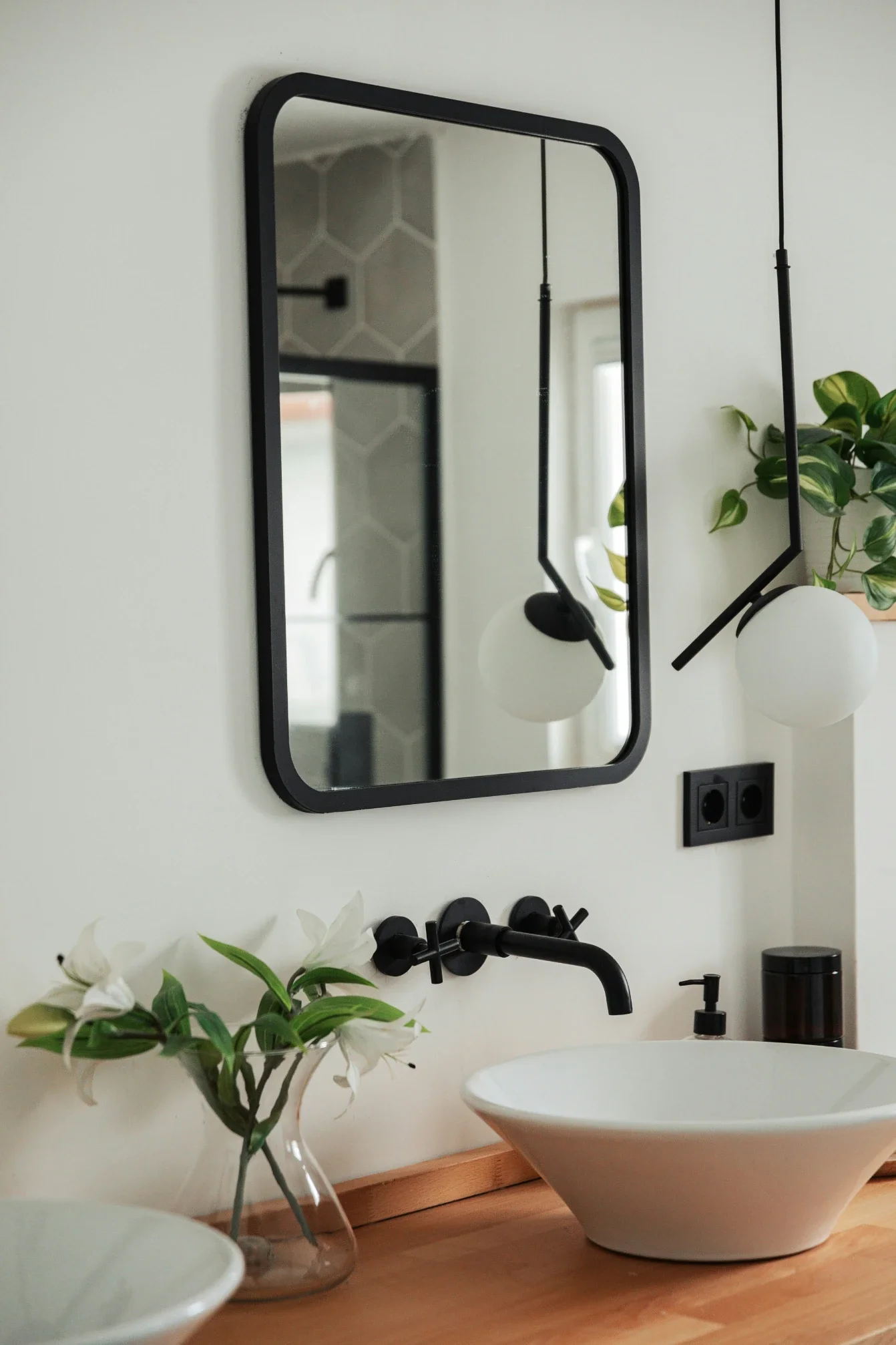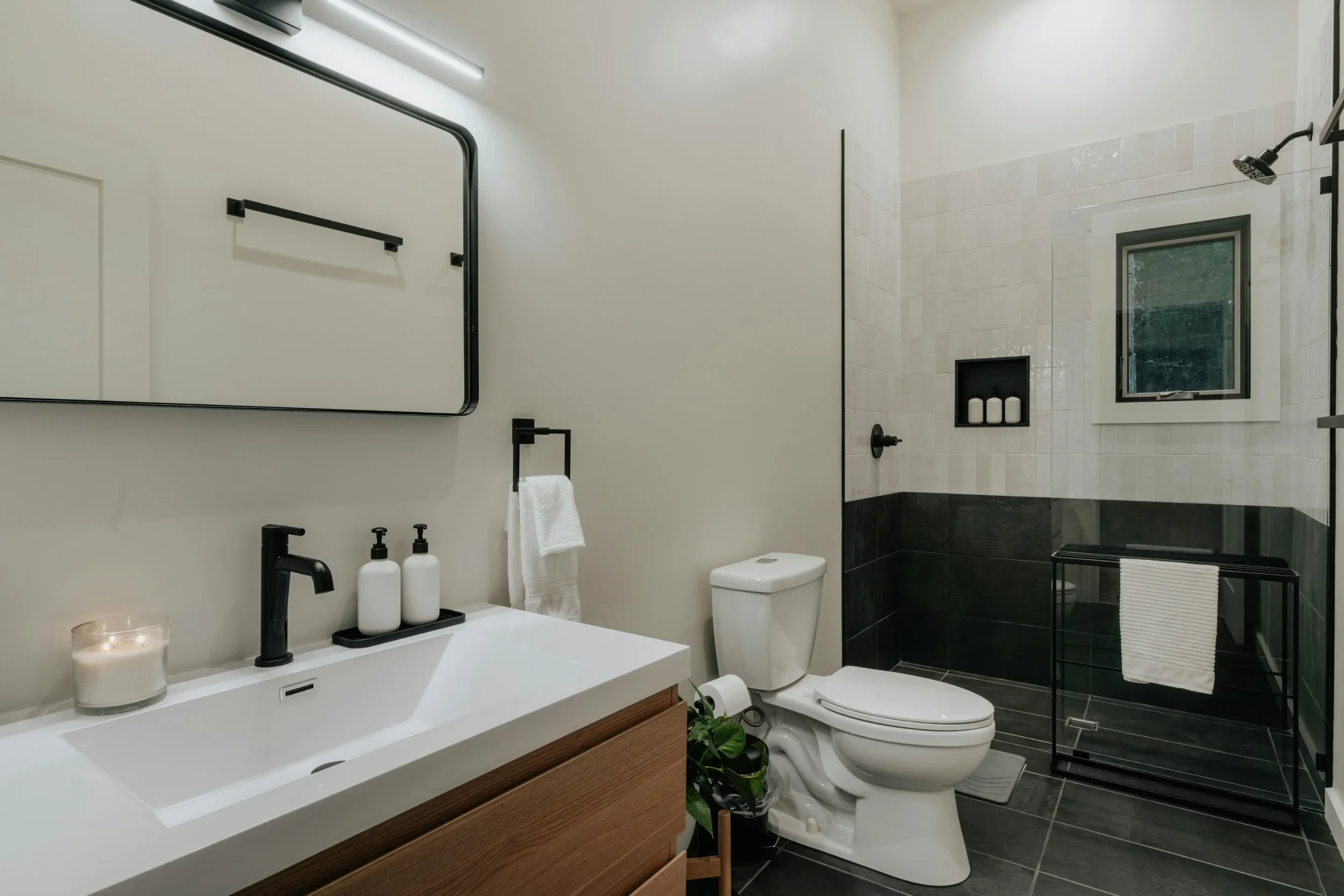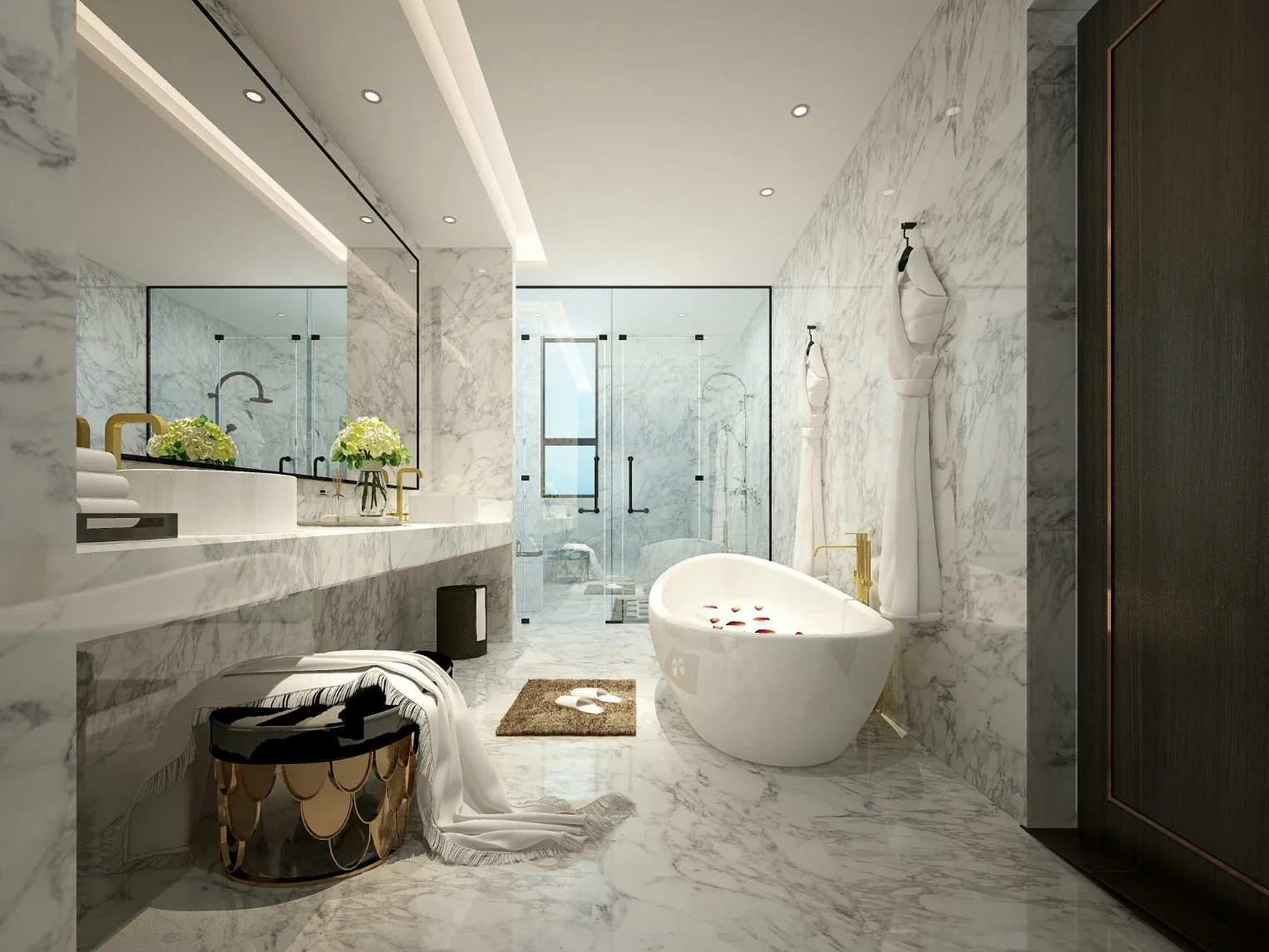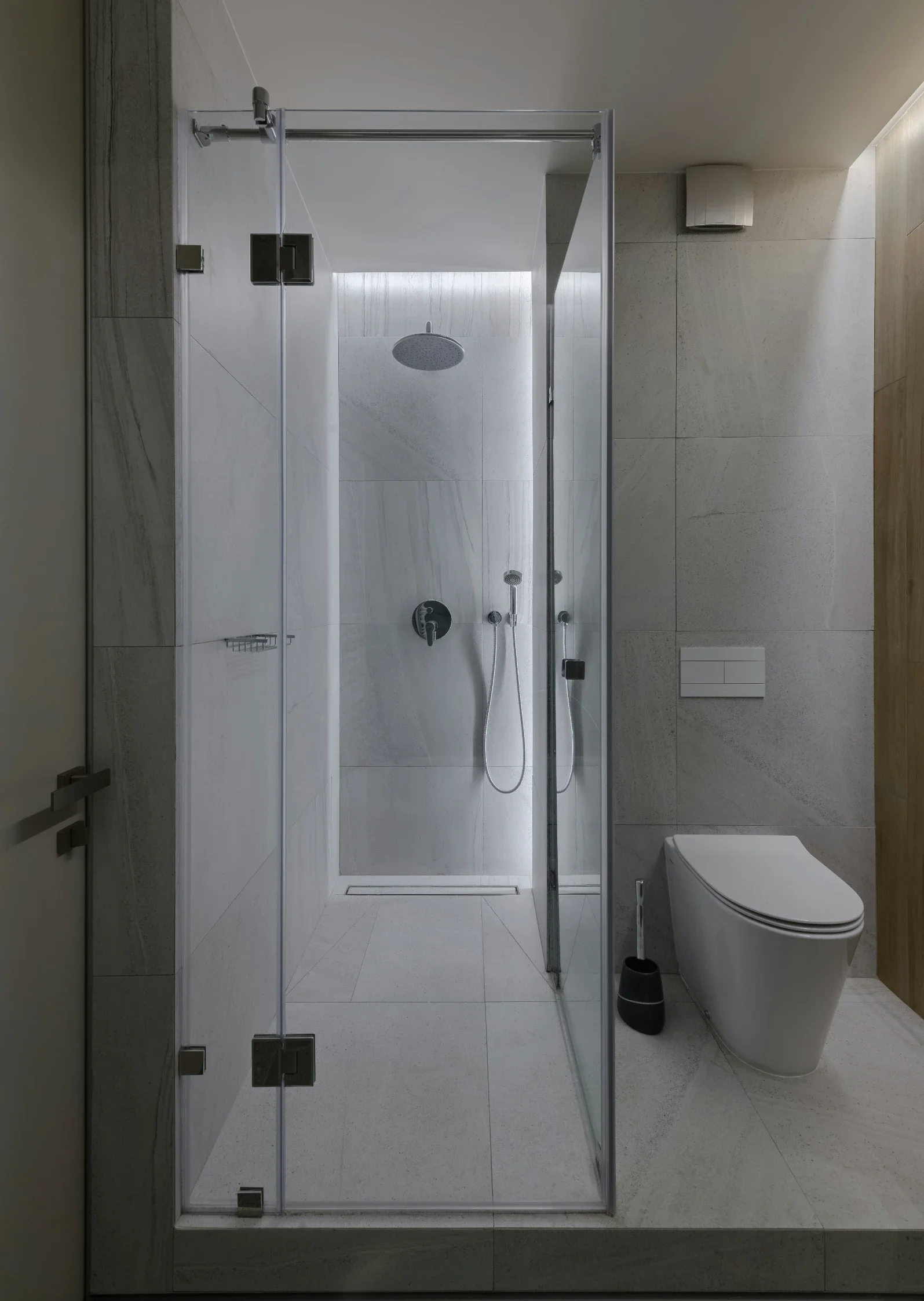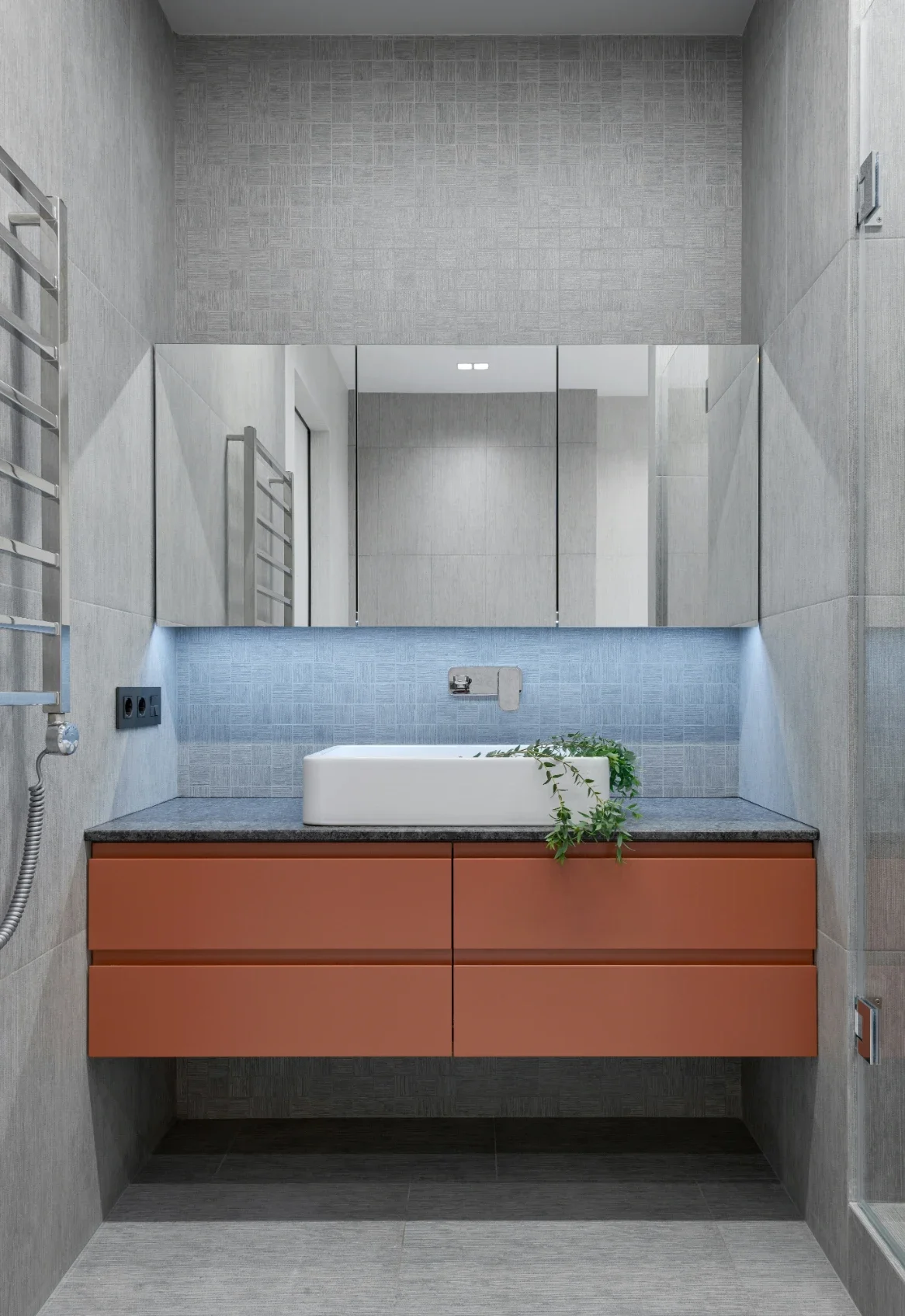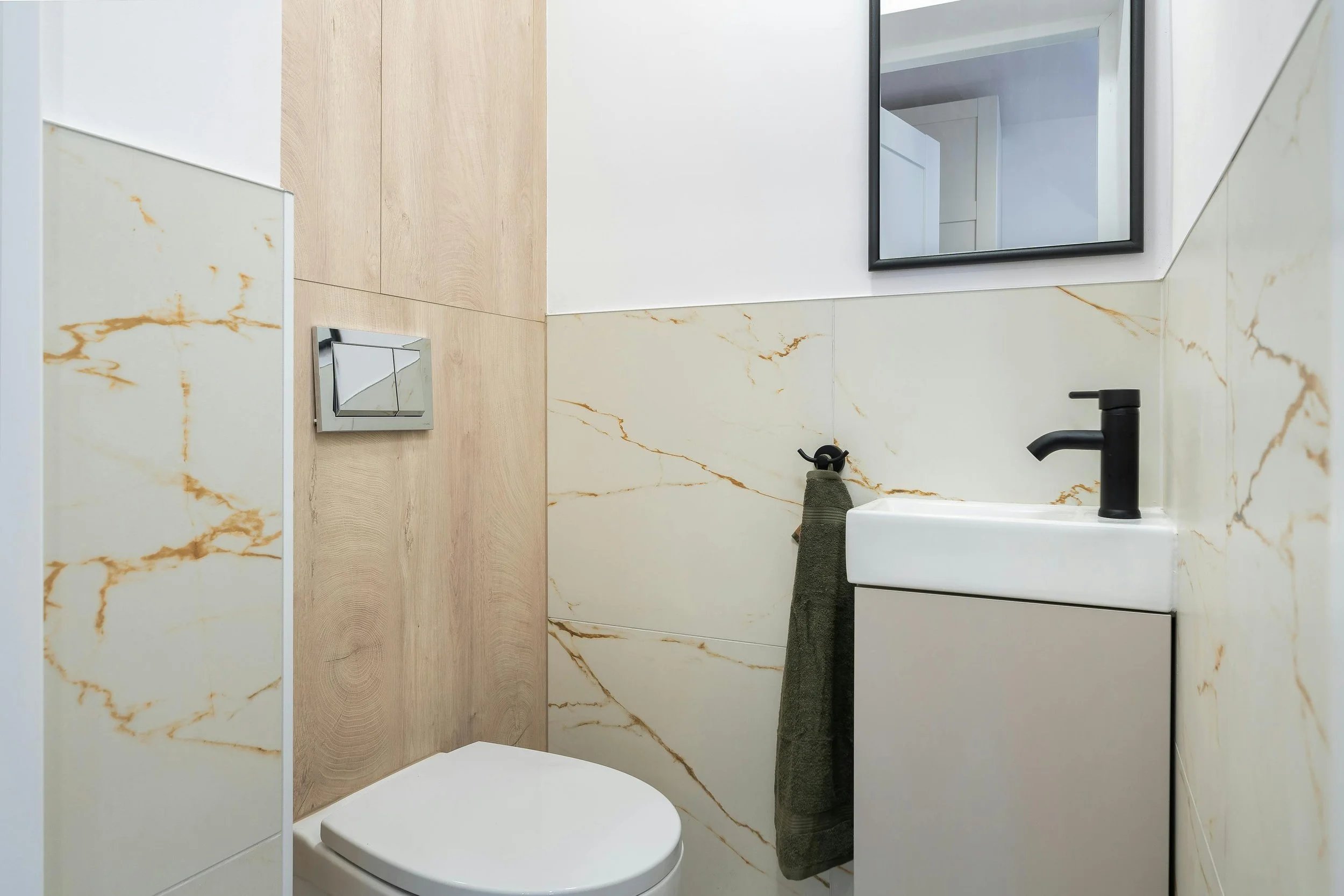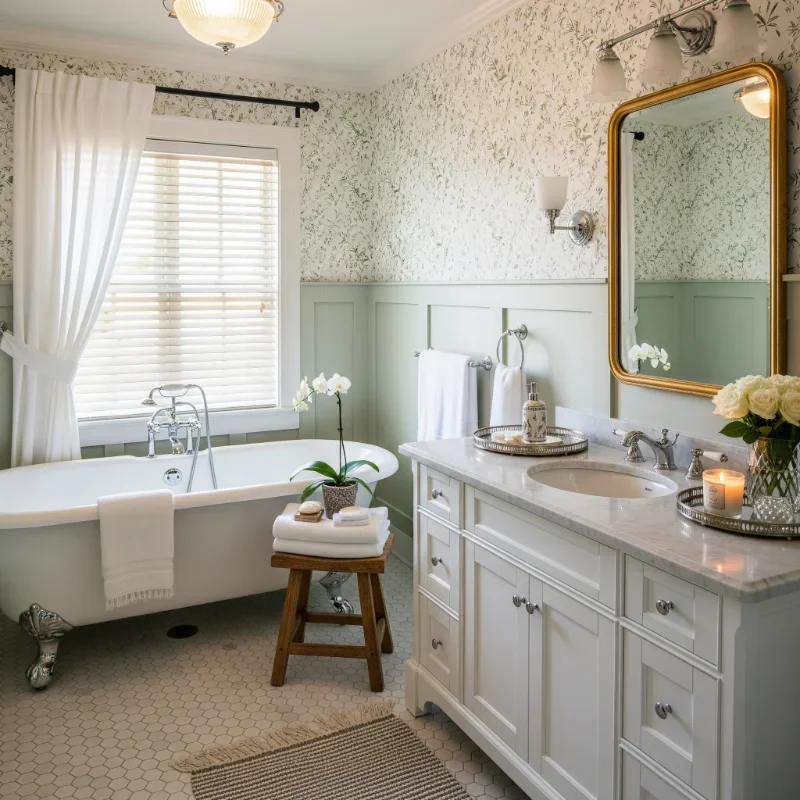Bathroom Renovation Cost: A Strategic Breakdown
Understand bathroom renovation costs with a clear breakdown of materials, labor, and design choices to help you plan your next remodel efficiently.
A bathroom renovation is one of the most impactful home upgrades. It can breathe new life into your home by enhancing both its functionality and aesthetic appeal.
However, without a clear understanding of costs, what starts as an exciting project can quickly spiral into a financial headache. Budget overruns, hidden expenses, and unexpected structural issues often catch homeowners off guard.
But it doesn’t have to be that way. Careful planning can help you avoid costly surprises during this renovation project.
So, in this article, we’ll break down the key factors that influence bathroom renovation costs, from materials and labor to hidden fees you might not have considered. You’ll also find expert tips on saving money without compromising quality, so you can make smart, strategic decisions for your project. Let’s dive in.
Factors Influencing Bathroom Renovation Costs
The cost of a bathroom renovation can vary significantly depending on several key factors. You must understand these variables to set realistic expectations and avoid budget surprises.
Here is a breakdown of these factors
Size of the bathroom
The square footage of your bathroom plays a major role in determining costs. Larger bathrooms naturally require more materials, such as tiles, flooring, and paint, which can increase expenses.
Additionally, bigger spaces often involve more complex layouts, potentially requiring additional plumbing or electrical work.
What’s interesting is that smaller bathrooms, while cheaper in terms of material costs, can sometimes be more labor-intensive due to limited space for workers to maneuver, which may slightly offset savings.
Scope of work (minor refresh vs. full remodel)
The extent of your renovation has a direct impact on the budget. A minor refresh, such as repainting walls, updating lighting fixtures, or replacing hardware, can cost as little as $1,000 to $3,000.
On the other hand, a full remodel that involves gutting the space, replacing plumbing, or installing new cabinetry can easily reach $15,000 or more.
The scope you choose should align with your goals. Are you looking for a quick update, or are you aiming for a complete transformation? That answer will also give you an idea of just how much you’re going to spend on the renovation project.
Quality of materials and fixtures
The materials and fixtures you select can dramatically affect the final price tag.
As you can expect, high-end tiles, luxury faucets, and custom vanities can elevate the look of your bathroom but also come with a premium cost. For instance, a standard porcelain tile might cost $2–$5 per square foot, while natural stone like marble can range from $10–$50 per square foot.
Similarly, a basic fiberglass bathtub might cost $200, whereas a freestanding soaking tub could set you back $1,000 or more.
You must balance quality with budget if you want to achieve the desired outcome without overspending.
Labor rates in your area
Labor costs can vary widely depending on your location and the expertise of the contractors you hire.
In urban areas or regions with a high cost of living, labor rates for an experienced bathroom renovator tend to be higher, often accounting for 40-60% of the total project cost. Skilled tradespeople, such as plumbers and electricians, typically charge more due to their specialized expertise.
While it might be tempting to cut corners by hiring less experienced workers, investing in reputable professionals can save you money in the long run by ensuring quality workmanship and avoiding costly repairs.
Plumbing, electrical, or structural changes
One of the most significant cost drivers in a bathroom renovation is making changes to plumbing, electrical systems, or structural elements.
Moving a toilet, sink, or shower to a different location, for example, can add thousands to your budget due to the complexity of rerouting pipes and drains.
Similarly, upgrading outdated wiring or reinforcing walls can further inflate costs. These changes often reveal hidden issues, such as water damage or mold, which can lead to additional repairs.
Careful planning and consulting with professionals early on can help mitigate these expenses.
Cost Breakdown by Renovation Type
You now have an idea of what factors will drive the cost of your renovation project. So, here, we’ll do the cost breakdown in three phases. We’ll look at how much you can expect to spend based on whether you are going for a basic, mid-range, or luxury renovation project
1. Basic Renovation ($3,000 - $10,000)
A basic bathroom renovation focuses on surface-level improvements rather than structural changes. This is ideal for homeowners looking to refresh their space without breaking the bank.
Common upgrades include repainting walls, updating light fixtures, replacing faucets, and installing a new vanity or mirror.
While this option won’t overhaul the entire space, it’s a cost-effective way to breathe new life into an outdated bathroom. However, keep in mind that structural or plumbing issues may remain unaddressed in a basic renovation. You’re only making aesthetic improvements.
2. Mid-Range Renovation ($10,000 - $25,000)
A mid-range remodel goes beyond cosmetic updates and includes higher-quality materials and moderate layout changes. This is the most common renovation tier for homeowners.
Upgrades often include new tile flooring, upgraded vanities, modern plumbing fixtures, and a new toilet or tub.
Plumbing and electrical work may be involved as well. This would include installing new lighting or moving a sink.
This renovation type allows for meaningful improvements while still being accessible to many homeowners. It’s a great option if you’re looking to modernize your bathroom without venturing into high-end luxury.
You can also employ cost-saving tips like opting for ceramic tiles instead of porcelain or natural stone. This can reduce material expenses without sacrificing style.
3. Luxury Renovation ($25,000 - $50,000+)
A high-end renovation transforms a bathroom into a spa-like retreat with premium materials, custom finishes, and advanced technology.
Upgrades often include heated flooring, walk-in showers with rain showerheads, custom cabinetry, and high-end countertops like quartz or marble.
Structural changes like expanding the bathroom footprint, adding skylights, and installing the popular freestanding soaking tubs can also happen here. These changes require significant investment, but result in a truly bespoke space.
This renovation can also incorporate smart bathroom technologies like voice-activated lighting, digital showers, and touchless faucets. This tech adds both convenience and cost.
Hidden Costs To Consider
While the visible aspects of a bathroom renovation often dominate the budget conversation, hidden costs can catch even the most diligent homeowners off guard. These unexpected expenses can quickly add up and derail your financial plans if not accounted for upfront.
Let’s explore some of the most common hidden costs:
Structural repairs (water damage, mold removal)
Bathrooms are prone to moisture-related issues, and tearing out walls or flooring during a renovation can reveal unpleasant surprises.
Water damage from leaky pipes or poor ventilation is a frequent culprit, often leading to rotting subfloors or compromised framing. Similarly, mold growth (hidden behind walls or under tiles) can pose health risks and require professional remediation.
Addressing these problems is essential but can cost anywhere from $500 to several thousand dollars, depending on the extent of the damage.
Permit fees and inspections
Depending on the scope of your renovation, you may need permits for plumbing, electrical work, or structural changes. Local building codes often require inspections to ensure compliance with safety standards.
Permit fees vary by location but typically range from $100 to $1,000 or more.
Electrical and plumbing upgrades
Older homes often have outdated electrical wiring or plumbing systems that may not meet modern demands. If your renovation involves adding new fixtures, relocating appliances, or installing energy-efficient upgrades, you may need to upgrade these systems.
Delays and change orders
Even the best-laid plans can encounter delays due to unforeseen circumstances, such as supply chain disruptions, contractor availability, or design changes mid-project. Change orders (requests to alter the original plan) can also inflate costs.
DIY vs. Professional Renovation: Cost Comparison
Choosing between DIY and hiring professionals depends on your budget, skill level, and the complexity of the renovation.
DIY renovations can save thousands on labor costs, especially for tasks like painting, installing hardware, or simple tile work. However, mistakes can be costly—redoing improperly installed tiles or fixing plumbing errors may end up exceeding professional costs.
Hiring professionals ensures quality work, adherence to building codes, and faster completion. While labor can account for 40-60% of total costs, professionals bring expertise that reduces the risk of expensive errors.
Cost-saving tip: DIY simpler tasks like painting or installing light fixtures, but leave complex work such as plumbing, electrical, and structural changes to licensed professionals. This way, you maximize savings without compromising safety or quality.
Tips for Staying Within Budget
Here are a few tips to help you save a few bucks as you embark on your exciting bathroom renovation project.
1. Prioritize essential upgrades
Focus on upgrades that add the most value or address critical issues, such as fixing leaks, updating plumbing, and replacing worn-out fixtures. Non-essential cosmetic changes can wait if your budget is tight.
Identifying must-haves versus nice-to-haves helps you allocate resources effectively and avoid overspending on features that don’t significantly impact functionality or aesthetics.
2. Shop during sales or consider second-hand items
Timing your purchases during holiday sales, clearance events, or end-of-season discounts can lead to significant savings.
Additionally, second-hand stores and online marketplaces often have lightly used vanities, sinks, and tiles at a fraction of the retail price. These places can help you find high-quality items that fit your budget without compromising style.
3. Stick to standard sizes for tiles and fixtures
Custom or irregularly sized materials often require special ordering and additional labor costs. Stick to standard dimensions for tiles, cabinetry, and fixtures whenever possible to ensure easier installation and reduce waste. This simple choice can save hundreds of dollars while still achieving a polished, cohesive look.
4. Plan thoroughly before starting work
A well-thought-out plan minimizes costly mistakes and last-minute changes. Therefore, create a detailed design, finalize material selections, and get precise quotes from contractors like GIA Renovations before beginning. Clear communication with your contractor ensures everyone is aligned, preventing delays and unexpected expenses during the renovation process.
5. Set aside a contingency fund
Unforeseen issues like plumbing repairs or supply shortages can arise, even with meticulous planning. That’s why you must set aside 10-20% of your total budget as a contingency fund. This provides a financial cushion for any surprises.
You can find more tips on effective bathroom renovations here.
In Closing
Renovating your bathroom doesn’t have to be a financial guessing game. Understanding the factors that influence costs, prioritizing your needs, and planning strategically, helps you create a space that’s both functional and beautiful without breaking the bank.
Remember to account for hidden expenses, explore budget-friendly options, and know when to DIY or call in the pros. Assess your goals, set your budget, and start transforming your space today. Good luck!
